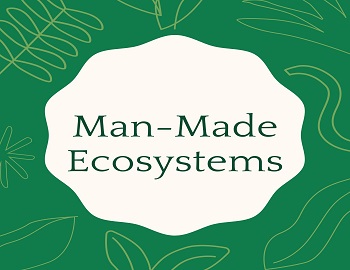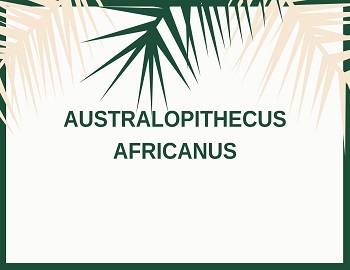Table of Contents
What is Water Pollution?
Water Pollution has been defined as the addition of any substance in water or changing the water’s physical, chemical, or biological characteristics in any way that interferes with its legitimate use in its natural state. In other words, the dumping of unwanted, harmful, and toxic substances into water is known as water pollution.
Sources of Water Pollution:
Water pollution is both natural and anthropogenic.
Natural water pollution:
It is water pollution caused by natural processes of soil erosion and the addition of silt, runoff, and leaching.
Anthropogenic (Man-Made) water pollution:
It is water pollution caused by human activities like agricultural runoff laden with excess fertilizers and pesticides, industrial effluents with toxic substances, and sewage water with human and animal wastes that pollute our water thoroughly.
Types of Sources of Water Pollution:
Point source of water pollution:
- Point sources are specific sites near water which directly discharge effluents into them.
- It is generally possible to treat the pollutants before they enter the water body.
- Major point sources of water pollution are industries, power plants, underground coal mines, offshore oil wells, etc.
Non point source of water pollution:
- No specific location to discharge the pollutants. Pollutants are discharged at various places.
- Generally, it is difficult to monitor, regulate and treat the pollutants before they enter the water body.
- Surface run-off from agricultural fields, overflowing small drains, rainwater sweeping roads, and fields, atmospheric deposition, etc. are the non-point sources of water pollution.
Causes of Water Pollution:
Industrial Wastes:
Various small or big industries discharge their harmful waste matter like liquid effluents, mercury (by paper and paint industries), lead (by the battery, pesticide, paint, and chemical industries), cadmium (by welding, electroplating, pesticide, and metallurgical industries) into the rivers, lakes, ponds and thus, pollute the water.
Sewage:
Discharging untreated or partly treated sewage of domestic and municipal origin into freshwater bodies causes water pollution. Domestic or public sewage mainly contains food waste, water from domestic use, and water from lavatories. More accurately, this sewage contains pollutants that originate from different human metabolism and vital activities. Various bacteria, yeast, algae, mould, and eggs of helminth viruses are detected in this water.
Agrochemicals:
Agrochemicals like fertilizers (containing nitrates and phosphates) and pesticides (insecticides, fungicides, herbicides, etc.) washed by rain-water and surface run-off pollute water.
Waste Heat:
Considerable thermal pollution results from thermal power plants, particularly the nuclear-power-based electricity generating plants. In such industries, where the water is used as a coolant, the waste hot water is returned to the original water bodies. Hence the temperature of the water body increases and causes thermal pollution of water.
Oil Pollution:
Spills from oil wells and refineries and washing of tankers during loading and unloading cause a lot of pollution. Oil spills spread over the surface of the water and pollute it.
Ground Water:
Water from seepage pits, refuse dumps, septic tanks and barnyards percolates into the layers of earth, reaches the ground water table, and pollutes it.
Synthetic Detergents:
Synthetic detergents used in washing and cleaning produce foam and pollute water.
Effects of Water Pollution:
Effects on aquatic ecosystem:
- Organic pollutants provide nutrients for stimulating the growth of algae and other plants. They may grow in blooms. Bloom formation reduces light to the submerged plants which get killed. Along with a dead matter of bloom-forming algae, the dead submerged plants consume most of the oxygen in decomposition. Dissolved oxygen (DO) is the amount of oxygen dissolved in a given quantity of water at a particular temperature and atmospheric pressure. The amount of dissolved oxygen depends on aeration, photosynthetic activity in the water, respiration of animals and plants, and ambient temperature. Lower dissolved oxygen may be harmful to animals especially fish populations. Oxygen depletion (deoxygenation) helps in the release of phosphates from bottom sediments and causes eutrophication.
- Oil spreads over water kill plankton, neuston, necton, water birds, and other organisms.
- Hot water because of thermal pollution not only decreases the solubility of O2 but also changes the breeding cycles of various aquatic organisms.
- The dissolved chromium present is toxic to fish and aquatic life and thus affect the natural self-purification property of the stream.
- Biocides, polychlorinated biphenyls (PCBs), and heavy metals directly eliminate sensitive aquatic organisms.
- The suspended solids such as hair, flesh, CaCO3, etc. interfere with aeration and photosynthetic activities of the aquatic flora.
- Suspended solids such as silt and coal may injure the gills of the fish and cause asphyxiation.
Effects on human health:
- Many wastewaters especially sewage contain many pathogenic (disease-causing) and non-pathogenic micro-organisms and many viruses. These may result in the spread of fatal water-borne diseases, some of which may assume on the epidemic state. These are viral hepatitis, polio (viral), cholera, typhoid, dysentery, diarrhoea (bacterial), amoebiasis (protozoal), etc.
- Mercury dumped in to the water is transformed into water-soluble methyl mercury by bacterial action. Methyl mercury accumulates in fish. Regular intake of meat from such poisoned animals causes Minamata disease, first reported in Japan in 1952. The disorder is characterized by impairment of various senses (tactile, vision, speech, and hearing), numbness of lips and limbs, repeated diarrhoea, haemolysis, and meningitis.
- Water contaminated with cadmium can cause itai-itai disease (ouch-ouch, I cannot-I cannot). Cadmium accumulates in the liver, kidneys, and thyroid. The pollutant causes nausea, vomiting, diarrhoea, cramps, hypertension, testicular atrophy, skeletal deformities due to the softening of bones, and multiple fractures.
- Nitrates (NO3) contamination causes Blue baby disease (Methemoglobinemia) and Phosphates (PO4) contamination causes bone marrow disease, when present in excess in drinking water.
- Excess of fluoride in drinking water causes fluorosis of teeth and bones.
- The disorder produced by the use of lead polluted water is called plumbism. It is characterized by colic, bluish lines around gums, anaemia, loss of appetite, convulsions, irreparable damage to kidneys, liver, and brain.
- Water polluted with radioisotopes causes birth defects, cancer, and genetic damage.
- Overexploitation of groundwater may lead to leaching of arsenic from soil and rock sources and contaminate groundwater. Chronic exposure to arsenic causes black foot disease. It also causes diarrhoea, peripheral neuritis, hyperkeratosis, and also lung and skin cancer.
Biological Magnification:
The phenomenon that involves progressive increases in the concentration of harmful non-biodegradable chemicals at different trophic levels in a food chain is called bio-magnification.
In 1949, DDT was sprayed over Lake Michigan in North America. This was done to kill the mosquitoes and prevent the occurrence of malaria. After some time the population of pelican birds in the area was found declining. It was found that it was DDT which has resulted in a fall in the bird population. About 0.2 ppm of DDT was found to be retained in the eater. The amount of DDT retained in the plankton increased to 17 ppm of DDT. The chemicals went on accumulating more and more in the next trophic level.
The scientists thus explain the abnormal decrease in the fish-eating pelicans on the basis of bioconcentration of DDT chemicals in the bodies of a pelican. The adverse effect of a higher concentration of DDT in pelicans was that the eggs laid down by them had a very thin outer shell. Due to this, even before the ones of pelicans could be hatched, the thin shells of the egg broke off.
Control measures of Water Pollution:
- Setting up of effluent treatment plants to treat wastewater can reduce the pollution load in the recipient water. The treated effluent can be reused either for gardening or cooling purposes or wherever possible.
- The root zone process has been developed by Thermax by running contaminated water through the root zone of specially designed reed beds. These have the capacity to absorb from the surrounding air through their stomata openings. It creates O2 rich conditions where bacteria and fungi oxidize the wastes.
- Hot water should be cooled before release from the power plants.
- Oil spills in water can be cleaned with the help of bregoli – a by-product of the paper industry resembling sawdust, oil zapper, micro-organisms.
- The best method and prevention of water pollution is the recycling of various kinds of wastes. The dung of cows and buffaloes can be used for the production of gobar gas, a cheap source of fuel, and also of manure.
- Judicious use of agrochemicals like pesticides and fertilizers which will reduce their surface run-off and leaching. Avoid the use of these on sloped land.
- Integrated nutrient management (INM) and integrated pest management (IPM) practices will reduce the effects caused due to excess pesticides.
- Use of nitrogen-fixing plants to supplement the use of fertilizers.
- Providing sanitation and wastewater treatment facility. Wastewaters should be properly treated by primary and secondary treatments to reduce the BOD (Biological Oxygen Demand), COD (Chemical Oxygen Demand) levels up to the permissible levels for discharge.
- Water hyacinth, a pernicious aquatic weed has come into prominence for purifying domestic and industrial wastewater. The plant regenerates rapidly and has a tremendous capacity to accumulate heavy and even radioactive metals. It is efficient in absorbing nitrogen, phosphorous, and similar chemical pollutant. It reduces BOD, COD, and organic carbon. The polluted water fed into reservoirs or lagoon with water hyacinth becomes markedly clean and free from 75-90% of its pollutants.
- Planting trees would reduce pollution by sediments and will also prevent soil erosion.









Comments (No)